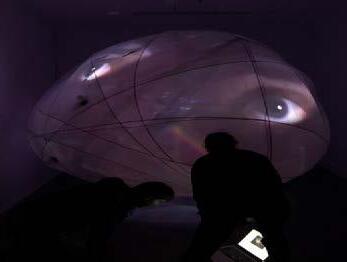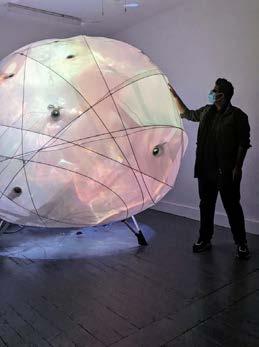TURKI ALHOUTI
University of Pennsylvania + Jefferson University



University of Pennsylvania + Jefferson University


ARCH 707 | Instr, Na WEI | Summer 22
Location: Philadelphia. PA

Collaboration With Suwei Wang
Display in ACADIA Exhibition 2022.

The transitional stage from transforming energy to transforming information into the digital age has fundamentally altered humans’ expectations, behaviors, and communication. The digital age impacts human civilization, culture, and the exchange of information, therefore on architectural design. The transformations brought by the digital revolution in the architecture field are numerous and manifold. The use of digital in communication coincided with the emergence of new principles to preserve abandoned buildings and the environment.
The proposal is to transfer space in the building to a new applied platform that keeps pace with the current era. Our research seeks to understand the principles of the abandoned classic building to develop a methodology that can co-exist and interact with the new part created on this site. The project’s approach is renovating part of the abandoned building as a gathering place for communication in the digital age. Preserving one corner of the existing classic building and introducing new elements from our digital age will inspire potential social encounters and interactions. In this way of acupuncture, renovating part of the building will trigger conversations and activate the whole area socially, economically, environmentally, and visually.



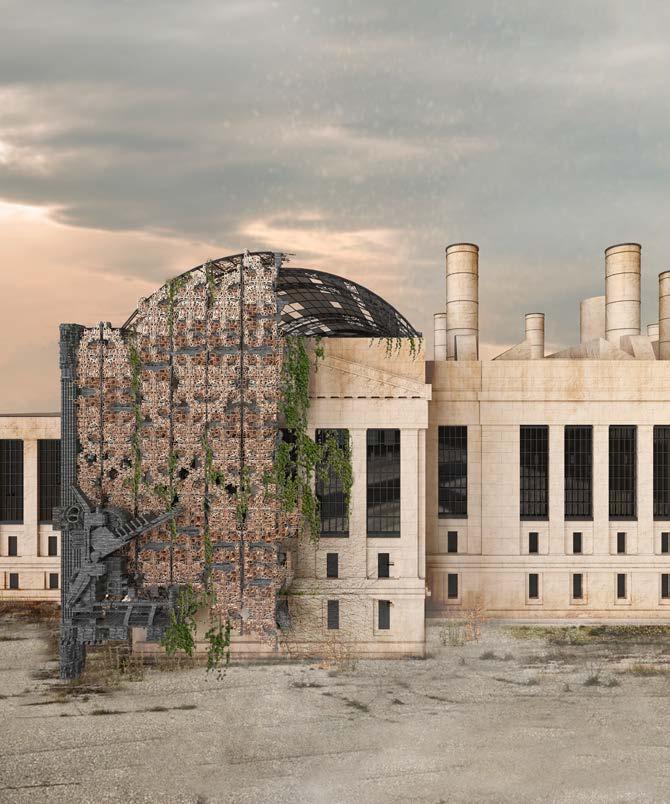


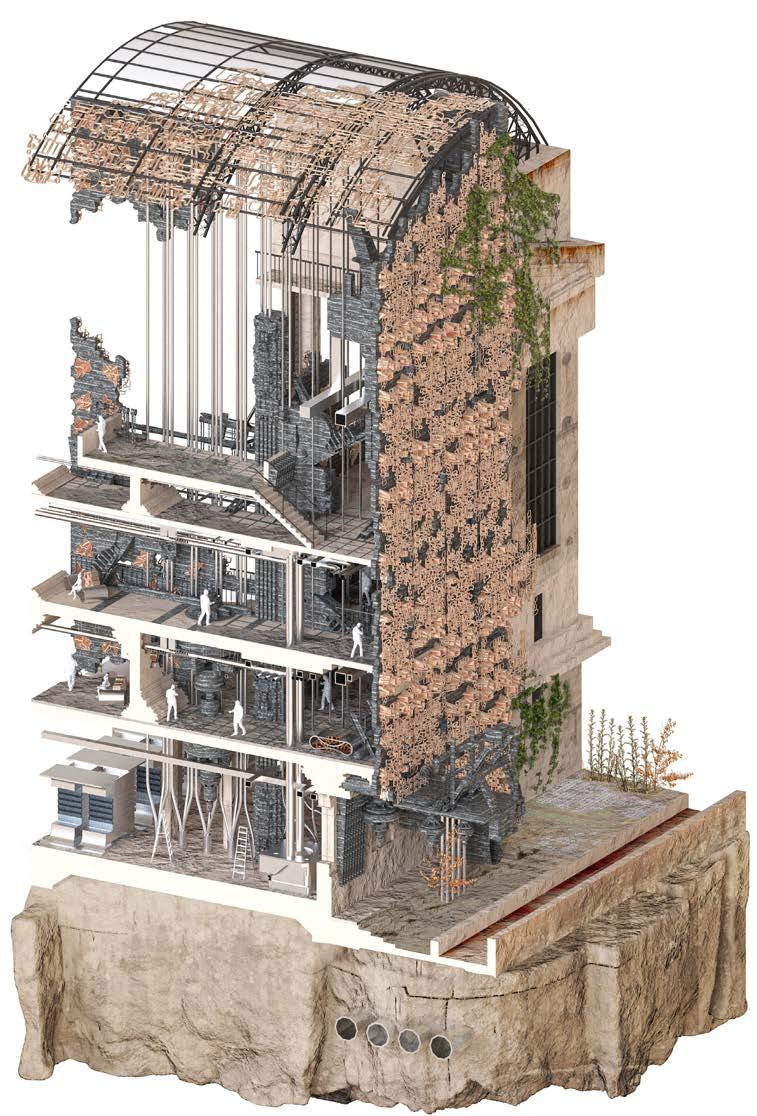
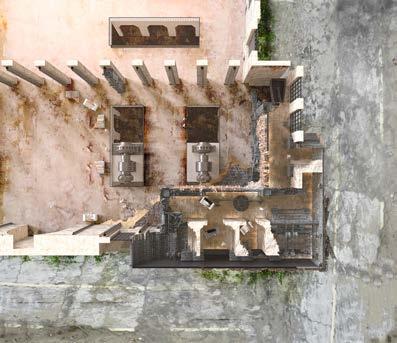
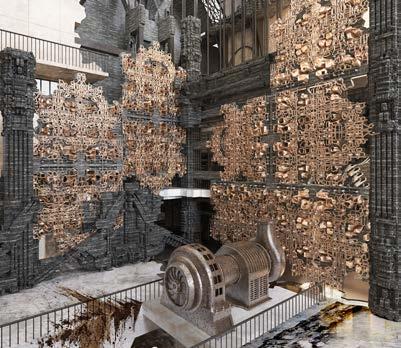

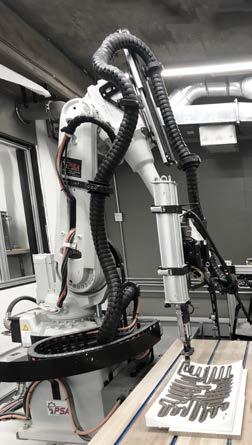



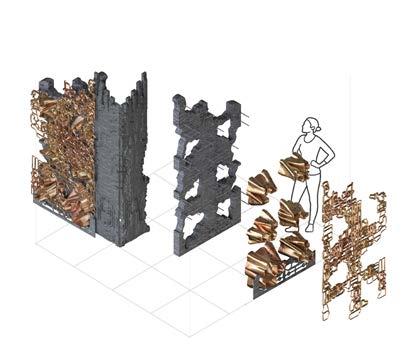

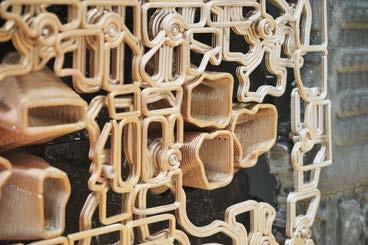

 4’x4’x5’ Physical Model
4’x4’x5’ Physical Model


ARCH 705 | Instr, Andrew Saunders | Spring 22
Location: Page. AZ
Collaboration With Suwei Wang
This project methodology focuses on Convolutional Neural Networks (CNNs) to begin transposing and synthesizing specific features of the reliefs. CNNs is a network architecture for deep learning which comprehends directly from data, eliminating the need for manual elements and feature extraction. CNNs are particularly beneficial for locating patterns in images to recognize cultural artifacts and objects sourced from deserts. In addition, the design utilizes contemporary methods of documentation and representation to compose architectural materials and textures. Photogrammetry techniques were used to 3D scan the site in various postures. The project engages in the process of defamiliarization and conducting historical research on desert culture.
The project focuses on the demands related to finances, work, relationships, and other situations. The design is a resort that is a socially acceptable space to release tension and stress where the users can experiment with different stress relievers that work best for them. For example, laws on marijuana use for medicinal purposes have changed dramatically over recent years. Researchers found that marijuana improved depression symptoms and helped treat pain and cancer.


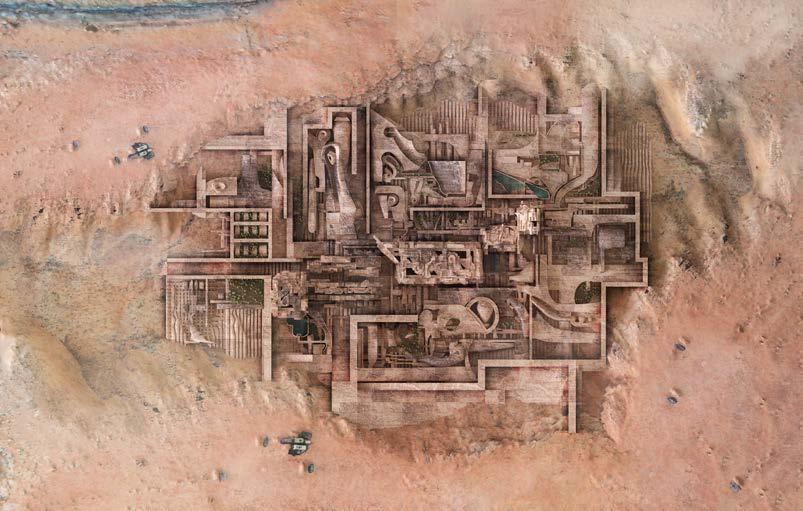
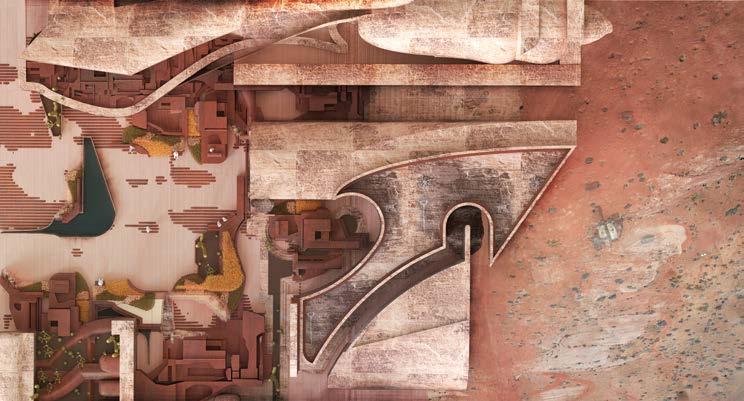
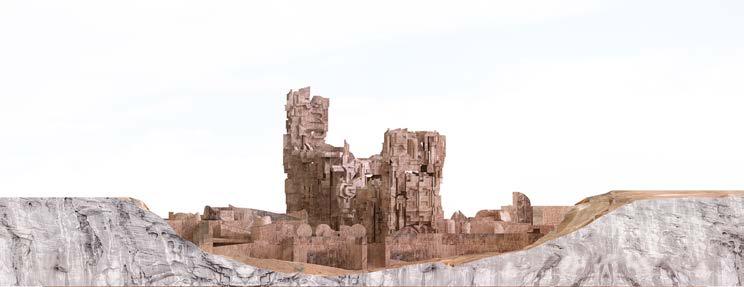








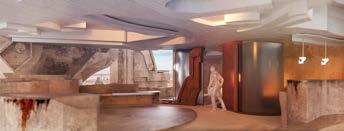
Main

 Entrance + Agricultural Robots for Medical Cannabis Farms
Entrance + Agricultural Robots for Medical Cannabis Farms
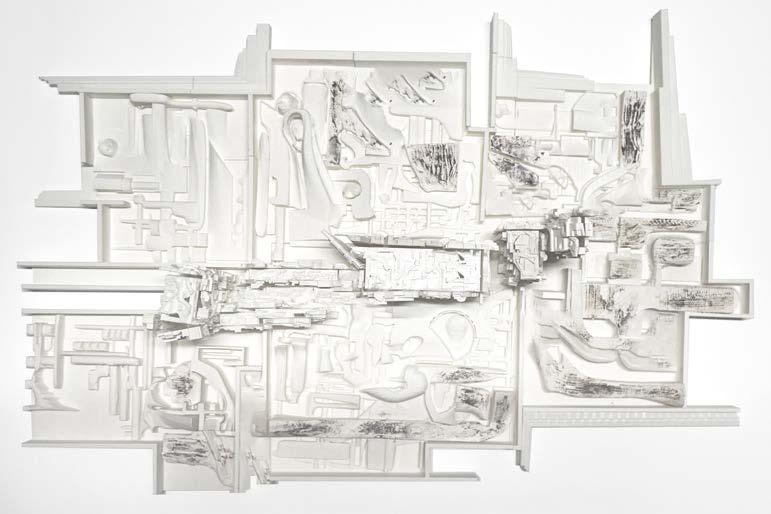


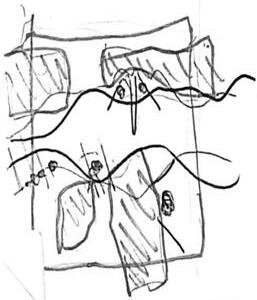
ARCH 412 | Instr, Lauren Thomsen | Fall 19 Location: Boise. ID

Collaboration With Scott Cousen & Sarah Meyer
Physical-Façade Model Displayed in Architecture + Design Center

Boise, Idaho is a culturally rich area with a large population influx, but with very little space to accommodate everyone’s needs. Specifically, Boise State University continually sets new fall enrollment records. This year’s number marks a nearly 3% increase from 2018 and almost 19% increase over the past five years.
The project is aimed to achieve an expansive space for the increasing crowded density of the student classes at Boise. Creating a library with the necessary program with large spaces is important to alleviate high density and create a great working environment away from the school. The library’s location is placed on the northern end of the park to take the least amount away from the campus, the park where many events occur.
The library’s purpose is to serve as needed spaces for the community and for students. This library provides the space for social, educational, and interactive possibilities for the community and students off-campus. The structure and programmatic spaces are based on the similar gridded structure of Boise City and its surrounding urban area.
Exterior Perspective + Axonometric + Structure Systems

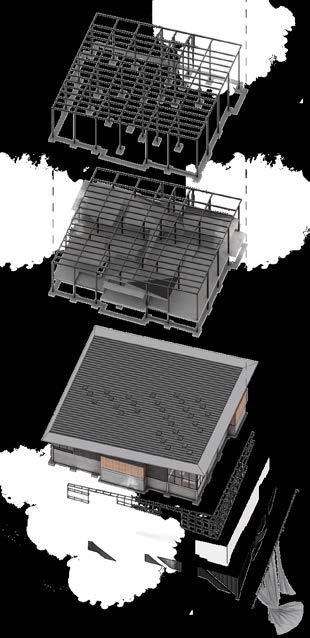
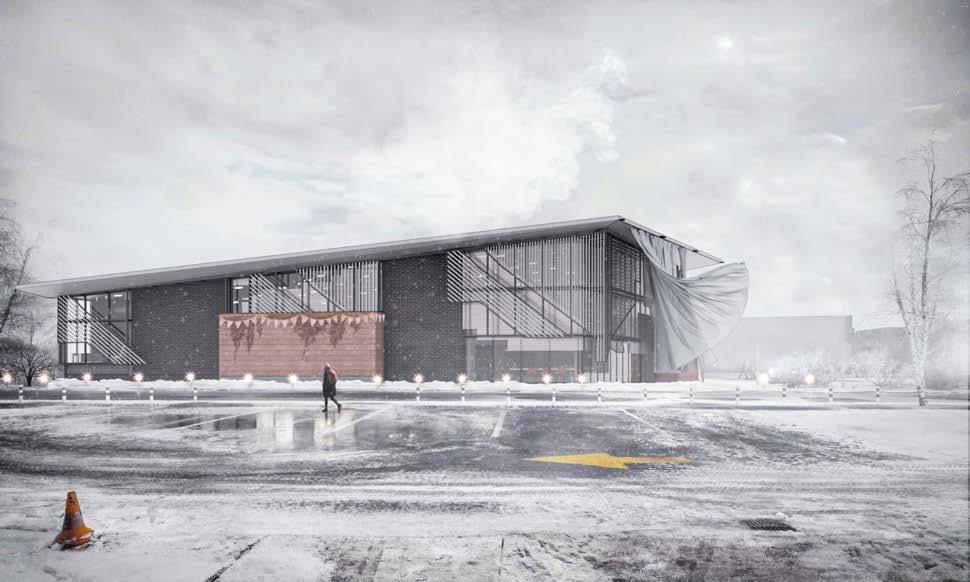
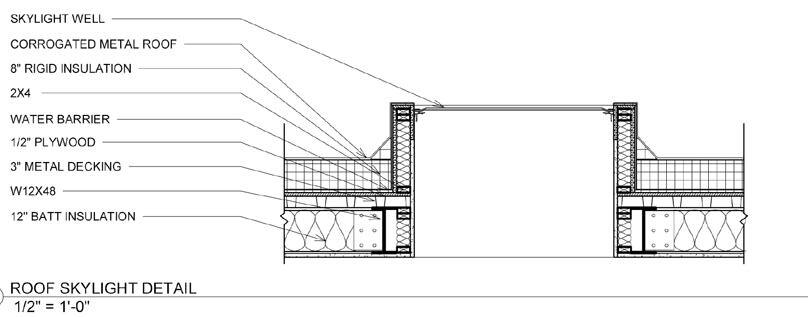

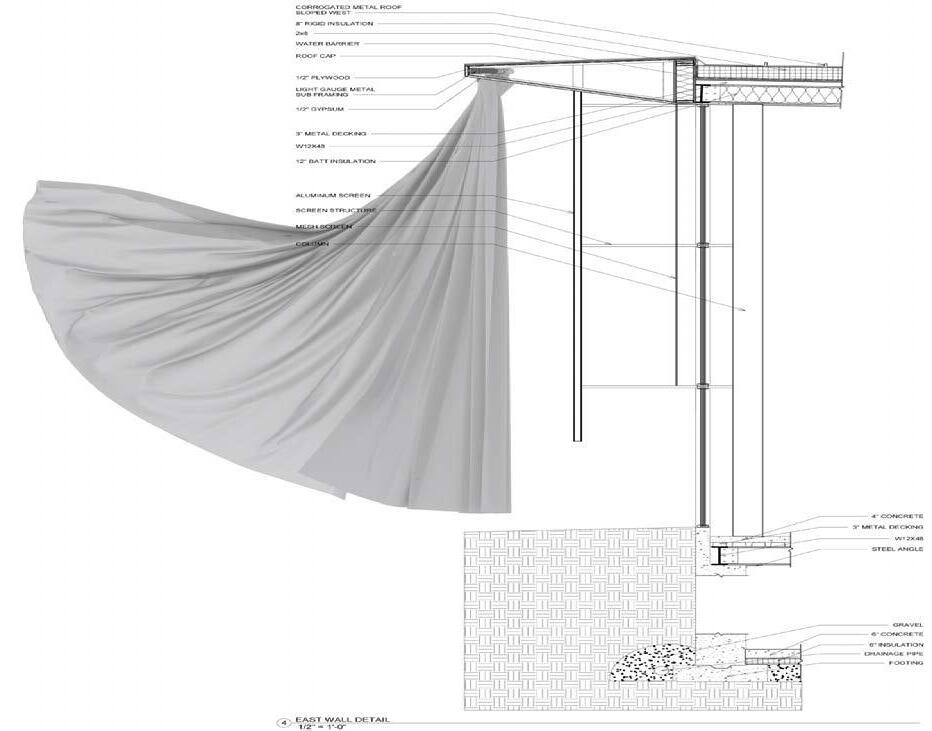

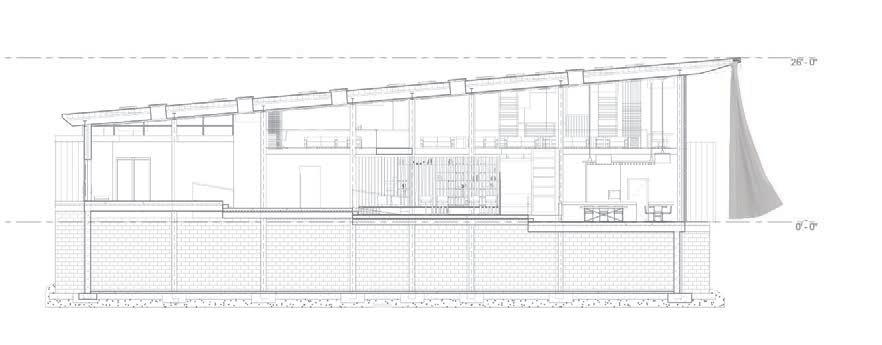

ARCH 703 | Coord, Ali Rahim | Fall 21 Location: New York. NY
This project speculates that a new typology can help sustain New York City’s global financial leadership in the world. New York cannot solely rely on import and export economies with the uncertainty of political pressures that affect the prices of goods and services. New York and other cities need to reinvent existing networks to be able to compete with trade barriers that are cumbersome and willfully destroy the growth of the global economy while having ramifications on New York City. New York City needs to raise capital as the Federal and State Governments have not helped New York’s finances in any way. If New York City mines Non-Fungible Tokens (NFT’s) that are pegged to Real Estate value in the city, residents and visitors alike can invest in the City’s future. Non-fungible tokens are a unit of data stored on a digital ledger, called a blockchain, that certifies a digital asset to be unique and therefore not interchangeable. This methodology of the project focuses on testing the limits and boundaries between programs to measure the spaces’ quality and performance. The two main spaces I focus on are data storage and museum/ galley spaces. By analyzing and examining patterns and five molding types, I am able to assemble a sequence of motion, sets of information that inform my proposal. Each of the five moldings has a specific function -from being the main structure of the building to window mullions. Focusing on the interior of the building, the transition space between the data storage and museum is created to give users access and a chance to explore and interact with the data they use and benefit from every day. Also, by analyzing the data storage spaces. The contrastive concept creates the massing and building facade based on the program and the use of the spaces. For example, the facade of the data storage has no opening, while the museum has more openings.




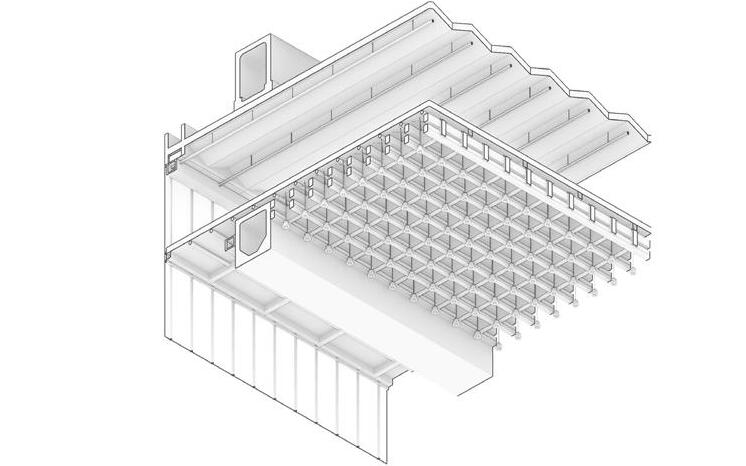
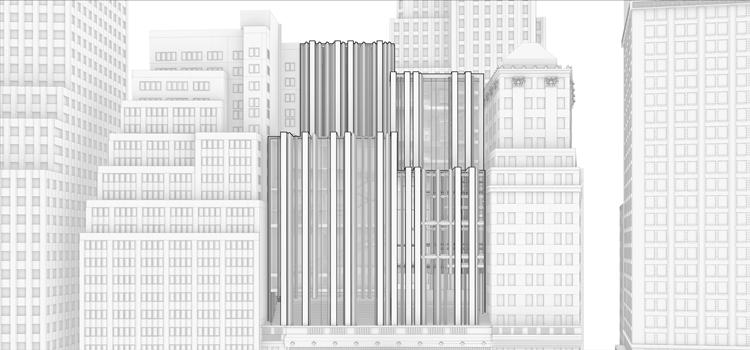






ARCH 507 | Instr, Edgar Stach | Fall 20

Location: Philadelphia. PA
Published in CAPE_SPACE WORK 08
The project prepares mature aesthetics and knowledge of time and era, penetrates the unknown, and discovers the words. Using generators and algorithms, the given image of the city has become a new form of psychedelic and abstract art. “Light creates ambiance, and feel of a place as well as the expression of a structure” Le Corbusier. The knowledge in the aesthetic contrast with the mystical suggestion of the systems. It focuses on spaces and ideas as forms of façade expression. The building façade becomes a symphony that shows the building’s systems that humans use and benefit from every day. The building’s aesthetics may not relate to its surroundings because it aims to make moments and spaces that give the users environmental and untraditional experiences. The design establishes public and private slipping with small and large circulation allowing many alternative areas for working or collaboration. The building systems, society, and space program research analyses how built spaces affect users interacting with them and, conversely, aesthetics and technology can affect users. It was not planned as a single building but designed as if it was a city. This is achieved by incorporating a range of urban functions, including a data center, a department store, an art museum, offices, a hotel, and an observatory. By looking at the building system in its façade, it becomes part of users’ life, not a mere building, bringing a new dynamism to Philadelphia.
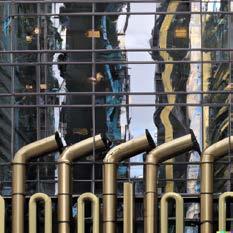
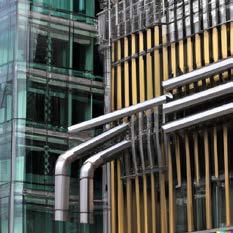

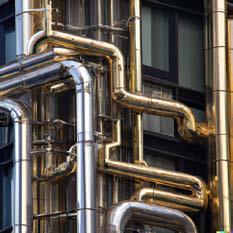


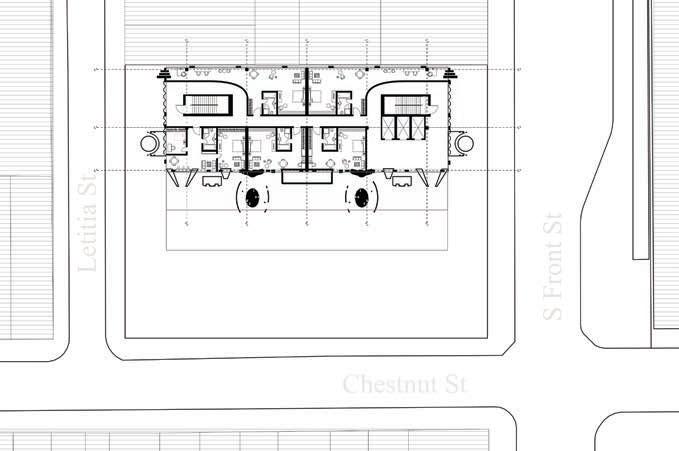

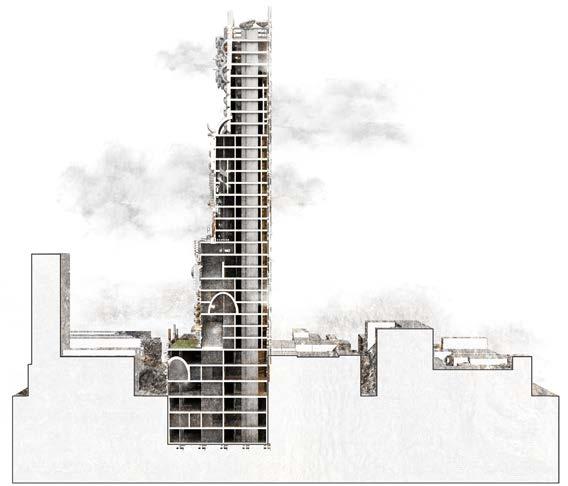
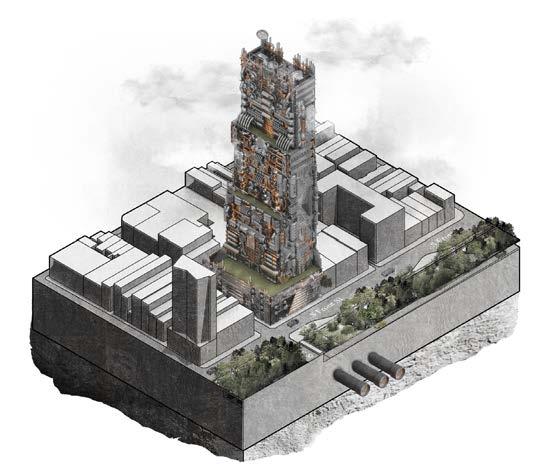








ARCH 311 | Instr, Ryan Glick | Fall 18
Location: Philadelphia. PA
Published in CAPE_SPACE WORK 06
Exhibited in CAPE_Jeff_Exhibition 2018 Models Displayed in Architecture + Design Center
Glick’s Studio_Second Place_Selected by the Jury

This project’s methodology focuses on feelings and actions that include the secondary analysis of existing studies by Wolf D. Prix, such as The Office and Research Center, 1991. Seibersdorf, Austria. It utilizes layers of information that may introduce dynamic ideas. “To encourage the flow of creative energy, the emphasis was placed on shaping a dynamic volume: the simultaneity of systems not only in the user’s working method but also in the architecture.” Wolf D. Prix.

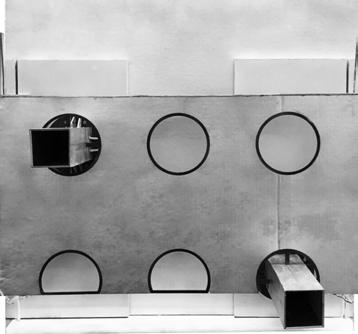
The project is a stress alleviation lab designed for people who experience stress and anxiety in modern life. This required a new building type that reflected their style of living and working. For example, the façade is fanned out, creating transitional and interim spaces. The balcony becomes an interim space and a walk-in view. The outward spaces can be experienced by users not only visually but also physically.



Wolf D. Prix adheres to the concept that many layers make up the whole. Previous discoveries from former work layer with cultural peculiarities and the idea of dynamic reconfiguration of previous architectural sensibilities. The façade is fanned out, creating transitional and interim spaces. The expansion of the space outward, in this case, can be experienced by users not only visually but also physically: The balcony becomes an interim space, a walk-in view.

The seemingly wild and inordinate angles and forms of the building are derived from forms from the surrounding setting, be it the seemingly random signs, lights, and surrounding structures. Both are always considered and implemented. A wide variety of building parts and different constructional systems were mixed for the research center: “Simultaneous and of equal value, old and new. The simultaneity of systems exists not only in the way the scientists work but also in the architecture,” The architect Wolf D. Prix is convinced. This can also be read from the various supports, volumes, and skins.
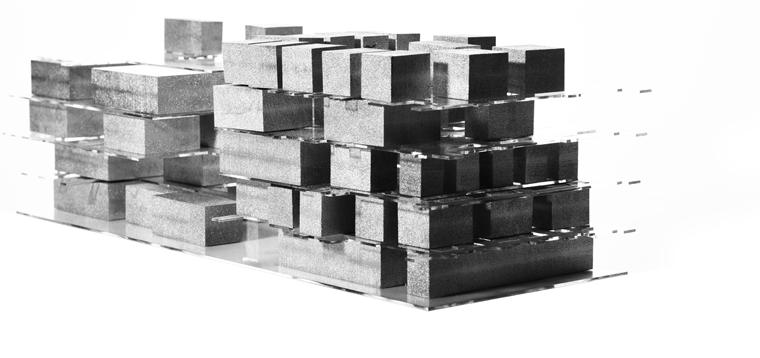
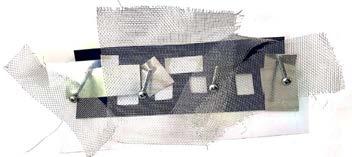
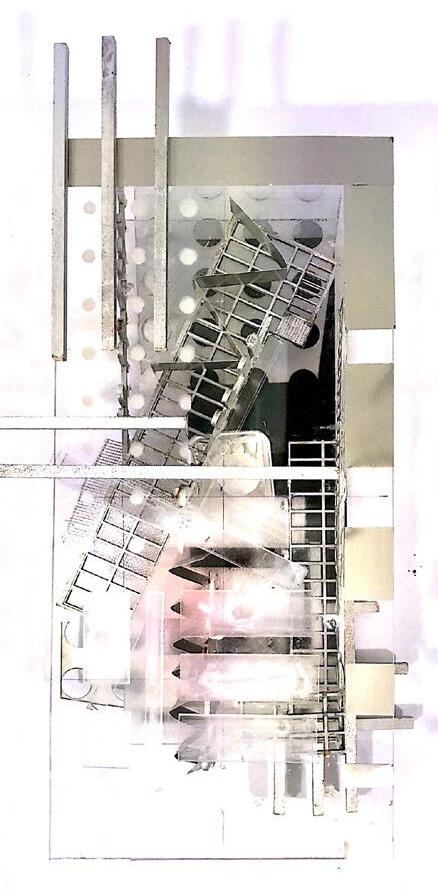


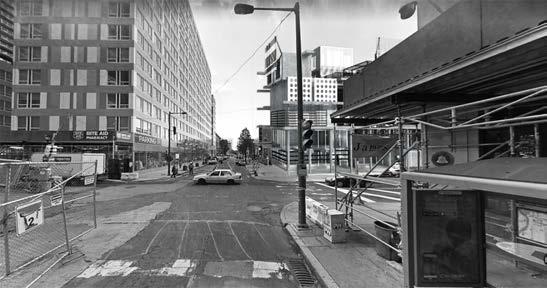
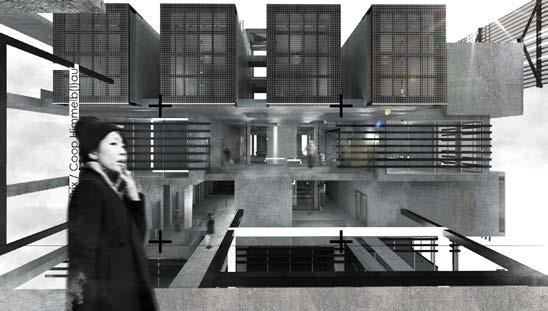

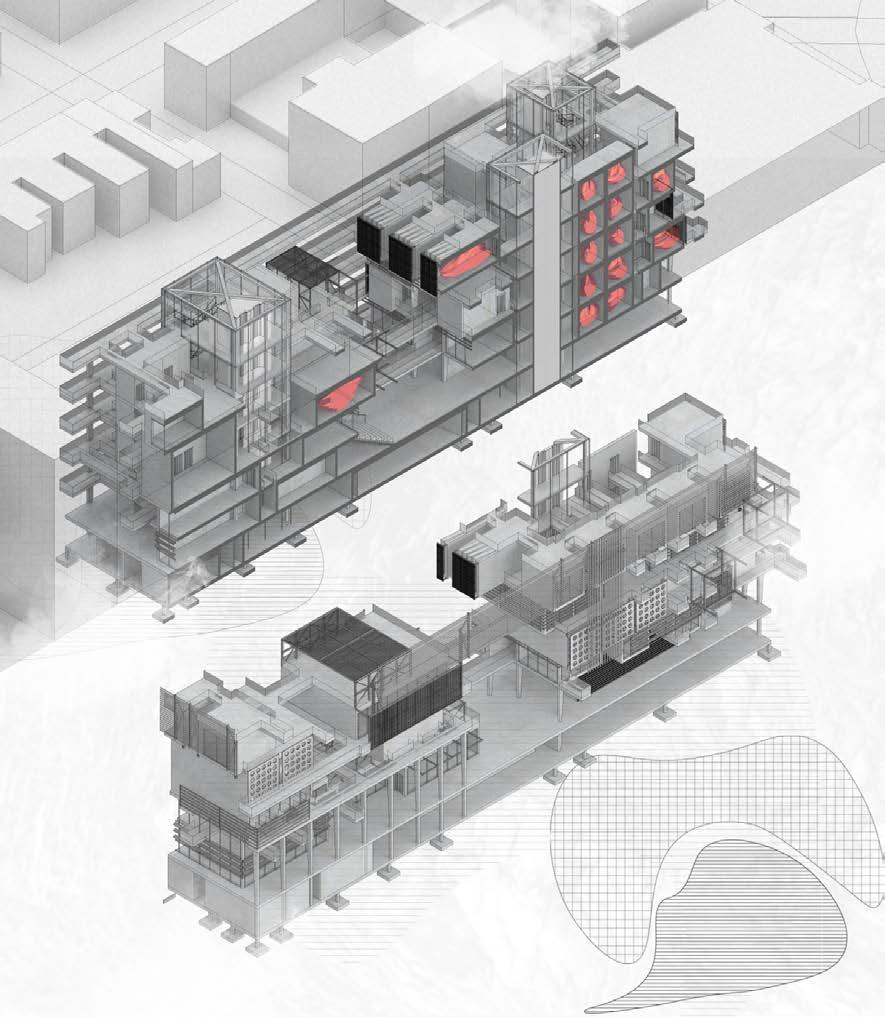
Independent Work | Fall 20

Location: Los Angeles. CA
Every year, wildfires ravage areas in California, causing dozens of deaths. California firefighters continue to fight massive fires, including the fiercest fire near Los Angeles, which threatens thousands of homes, forcing authorities. The project demonstrates a very sensitive approach to the site. It offers the users not only a memorial but also a safe place. The idea of simplicity shows a strong maximum amount of square and border that contains accuracy. The peak of South Mount Hawkins is in itself a great way to let people make their actions. The square and border idea, establishing an interjection between fire, earth, humans, and their actions. Nature is not the only reason for the wildfires, but humans bear the bulk of the blame for the devastating wildfires. The project contains a multitude of places and ways to break the boundary between the fire and the humans. It is a way the help people to understand and see their actions.
Since solar energy occupies almost 30% of sustainability according to Heating, Cooling, and Lightning book, the concept of the design was based on it. Renewable energy principles were applied in the design through installing PV. Panels on the site to help to generate electricity to operate fire observation, radio equipment, shelter needs during times of emergency.


Wind flow can be captured by wind turbines and convert to electricity. Wind turbines have been installed on the tower facing wind direction. A generator can convert this power into electricity to supply the site with electricity. Generally, there are several different standards for wind turbines. From a sustainable perspective, easy transportation to the site should be strongly considered. Therefore, I used small wind turbines to facilitate such a major challenge.
Rainwater is collected to be reused to freshen and humidify the air inside of the lobby “Regular water use: Low Flow Fixtures are used to reduce consumption of potable water Irrigation: Potable water reduction of 1.2 million gallons/year or 30% approximately Cooling tower: Potable water reduction of 165,000 gallons/year or 100%
Los Angeles gets some kind of precipitation, on average, 34 days per year when 3.9 inches of rain happens in February. Rainwater is collected to be reused from the roofs stored in tanks to freshen and humidify the air inside of the shelter and the climate station.








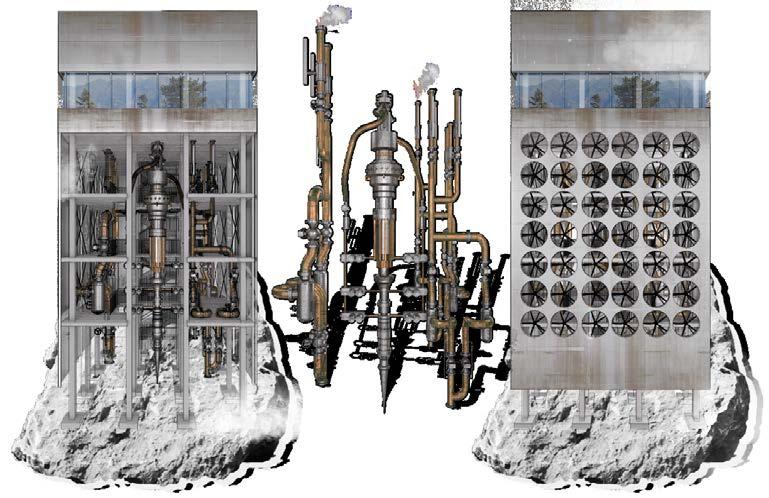
ARCH 733 | Instr, Laia Mogas-Soldevila






| Spring 22 | Collaboration Project
Fiber-reinforced polymer matrix has good properties and superior advantages of natural fiber over synthetic fibers in terms of its relatively low weight, low cost, less damage to processing equipment, good relative mechanical properties such as tensile modulus and flexural modulus, the improved surface finish of molded parts composite, renewable resources, being abundant, flexibility during processing, biodegradability, and minimal health hazards. A bio-resin is a resin that derives some or all of its constituent monomers from biological sources. Today’s sources are plant-based, usually corn or soybean by-products from bio-diesel fuel refinement. Other candidates include sugar cane, sugar beets, potatoes, lignocellulose, whey, and algae.
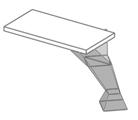


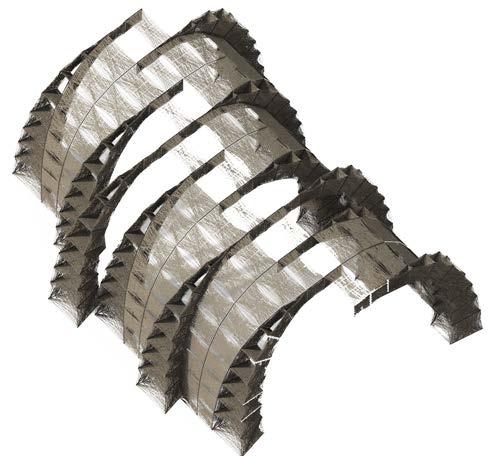
We propose a research opportunity focusing on using natural fiber composites as structural elements. We propose executing the proposal in multiple natural conditions in multiple climatic zones for over 5 years to observe and analyze how the composite panels adapt to the ambient conditions. This research proposal aims to study the behavior of such panels in nature and to further propose amendments in the design process to make the design of natural fiber-based panels in economically weaker countries costeffective.
The scope of the research is to test out the fabrication of natural fiber-based composite panels in different climatic conditions around the globe. To start off, the first chosen site is in South America, using Flax fiber and AESO soy-based resin.
bath
Feeding bre + resin bath
Detach the axes of framework
Detach the axes of

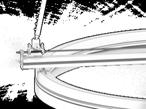
Curing of panel
Assembly of nal form

Fibre plant cultivation


Extraction and processing
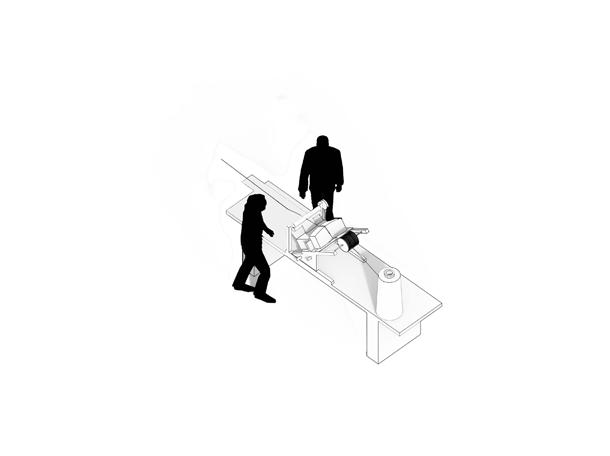

Prepare machine for fabrication
Prepare machine for fabrication
Feeding bre resin
Curing of panel Assembly nal form Fibre plant
Homing the machine for fabrication
Extraction and processing Homing machine fabrication


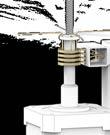




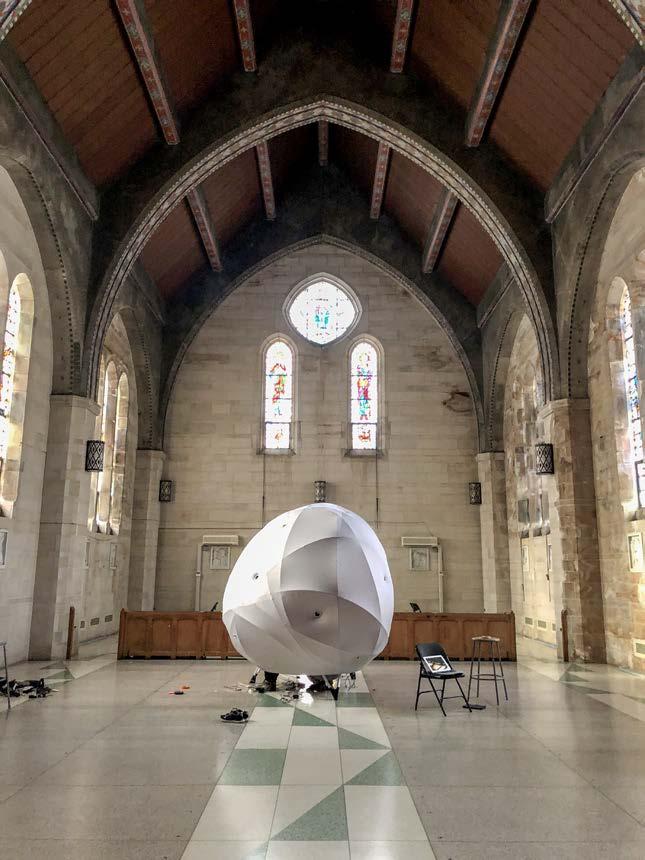
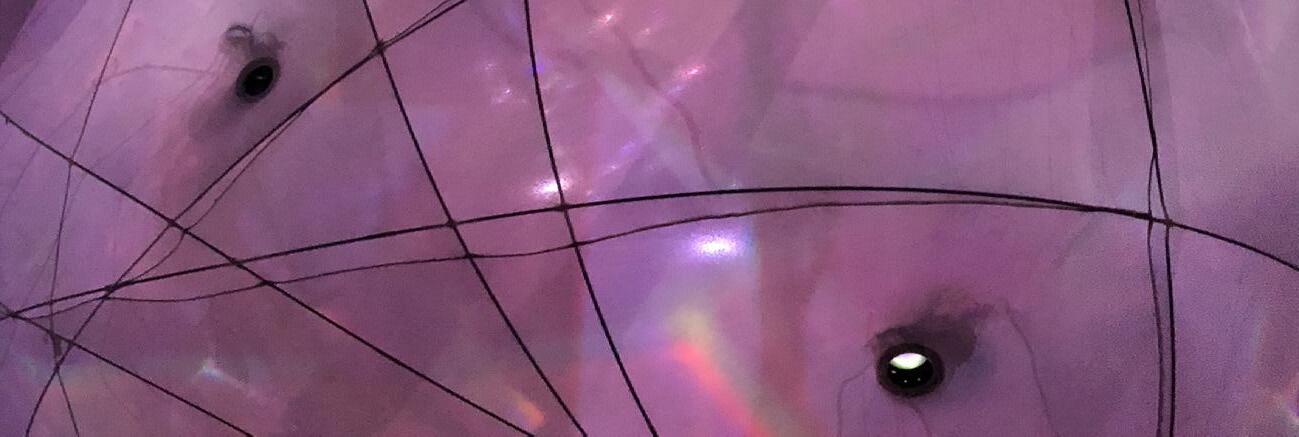
Synesthetic Research and Design Lab Location: Philadelphia, PA
Synesthesia is the pilot to a series of interactive installations directed by Severino Alfonso and Loukia Tsafoulia at the Synesthetic Research and Design Lab. This project is a living organism producing dynamic, unexpected, and sensorial experiences, never static nor predetermined. The community is the maker of the installation that comes to life only through their participation. Synesthesia has been exhibited in 2021 at the HotBed Gallery, Philadelphia, USA; the European Cultural Center as part of the 17th Venice Biennial in Venice, Italy; and at the Municipal Theater of Piraeus in Athens, Greece in 2022. It was exhibited in the great hall of Trajan’s Market in Rome as part of the 2,775 years from the foundation of Rome celebration in April 2022. As an internationally traveling installation, the project engages different audiences, communities, contexts and cultures with a special focus on individuals with diverse perceptual modes. The installation’s interactive interfaces and live streaming features expand human agency through the use of sensors, actuators, realtime response, and a human-machine participatory constitution.Performance and participation are sought not only as an experience but as a way of research and a way to create knowledge and awareness, independence and inclusion; as a process and a response to social and experiential considerations.
Elements’ Disassembly + Photos
